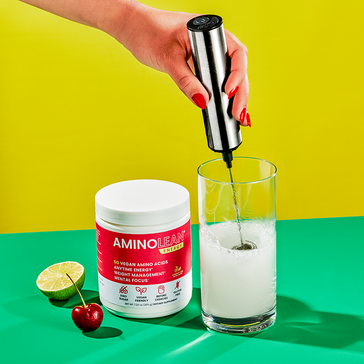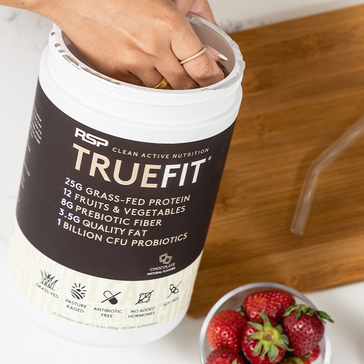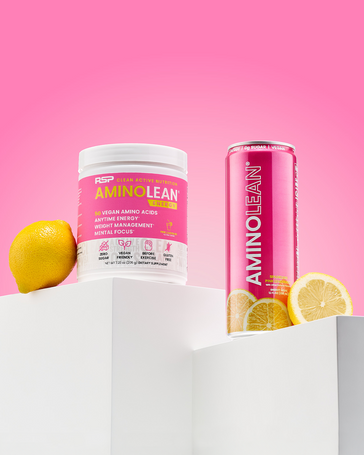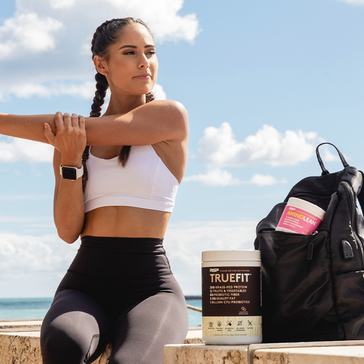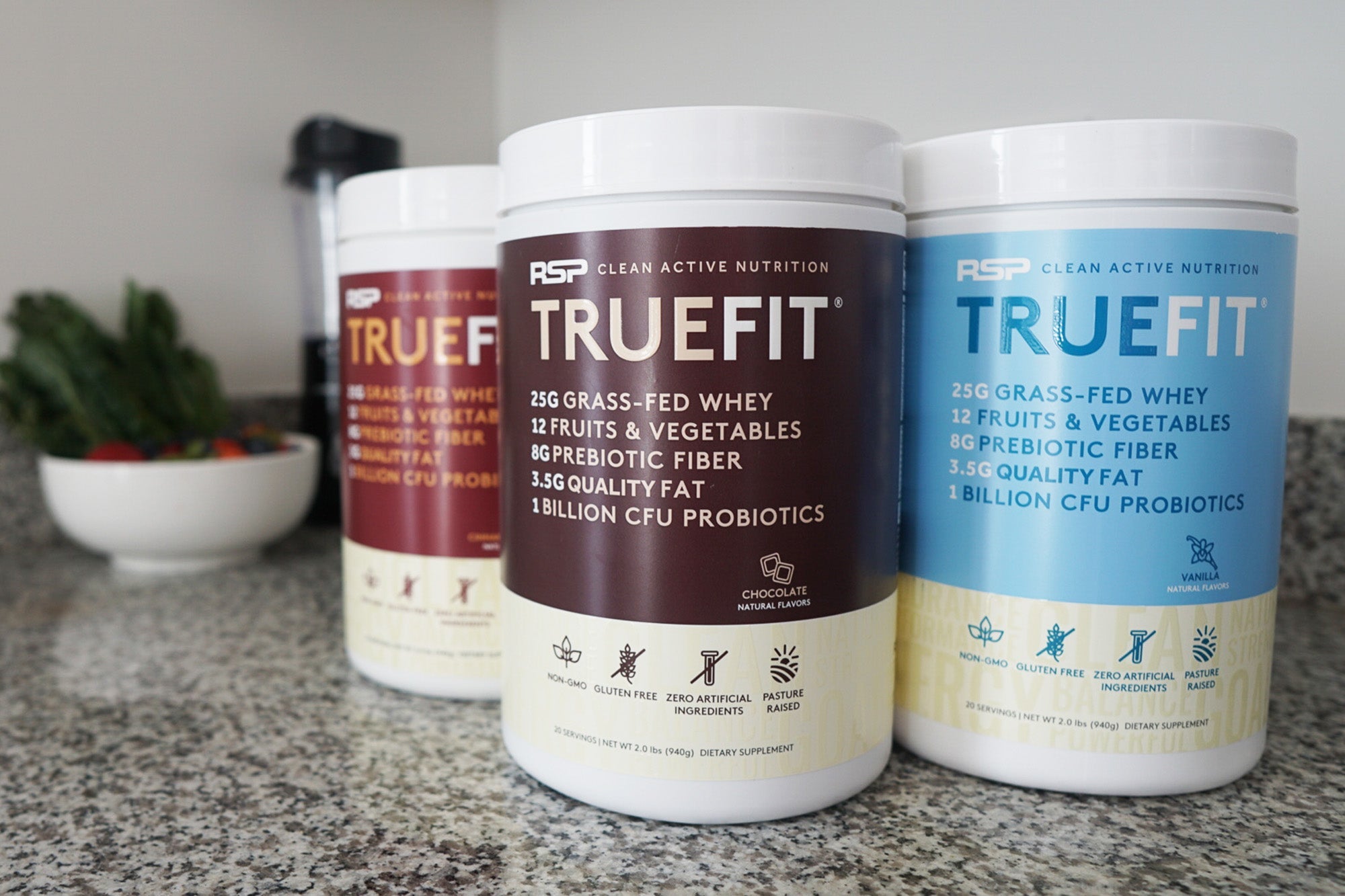We hope you enjoyed Part 1 of our series and now have a better understanding of Whey Protein.
Men’s Health says that “if you’re looking to build muscle, boost your performance, and make the most out of all your hard work in the gym, whey protein is the way to go.”
So in Part 2 we take a deeper look at why Grass Fed Whey is the best protein to support active lifestyles.
- The RSP Nutrition Team
|
by Monica Auslander Moreno, MS, RDN Why Grass-Fed is GreatGrass-fed cows are fed… grass! Unfortunately, ‘conventional’ cattle are often fed a fermented corn product, resulting in nutrient-poor milk. A cow fed its preferred diet of grass produces milk with more robust amounts of omega3 fatty acids, CLA (conjugated linoleic acid, a beneficial fatty acid) as well as higher amounts of immune-supporting nutrients like alpha and beta lactoalbumin. Grass-fed whey is also a kinder and more humane feeding method (the fermented corn mixture often can actually intoxicate the cows!)
Why Whey is Ideal for Active LifestylesActive individuals, whether recreationally or professionally, often rely on whey protein supplementation -- with good reason. Whey is often considered a darling protein for many individuals because of its high bioavailability / digestibility. For individuals engaging in resistance exercise, whey protein supplementation has been found to increase MPS (muscle protein synthesis) when used properly and in conjunction with the training and adequate protein (the “sweet spot” of 20 grams is often cited, though it may be highly individual dependent), before or after resistance training. We even know that consuming whey 30 minutes before bedtime can result in increased muscle protein synthesis (and who doesn't love a bedtime creamy cinnamon shake?). Whey also enhances glycogen synthesis and promotes a higher activation (phosphorylation) of mTOR (essentially a director chemical for MPS). Recall from Part 1 of the series that whey also contains all essential amino acids – the types of protein your body needs to obtain from exogenous sources. Studies have shown that these proteins tend to be quicker and better absorbed when in whey protein form and contribute to muscle growth. Foods, like whey, that contain all nine of these amino acids are called “complete proteins ” and are essential to our overall health and the pursuit of peak performance. The bioavailability of whey (or the degree and rate at which it is absorbed into the body) also outshines that of other proteins, with only rice protein being a slightly formidable opponent because of its rapidly usable leucine content. So if you are looking to supplement an active lifestyle, whey may indeed be right for you.
All for Whey and Whey for AllJust because something is good -- it doesn’t render MORE to be BETTER. If you overconsume ANY food, fat storage on the body (and unwarranted/undesirable weight gain) is a risk. Your body will simply store excess calories (from any food) as fat if energy isn't required to utilize it. While it is recommended to disperse protein intake throughout the day (dosing every 3-4 hours) for resistance training and MPS, having a full whey protein shake at those intervals may not work for certain people (individuals susceptible to dairy foods may experience gas/bloat/diarrhea from too much whey). However, there is little to no lactose in whey protein supplements, so it is likely that individuals who can’t tolerate intact milk WILL be able to tolerate whey protein supplements. In fact, most hospital and infant formulas contain whey protein as a supplement, and these are given to considerably ill patients. Humans have been consuming whey for millennia; as cows, sheep, goat, and even camel milk products have been a staple across the globe dating back to ancient times. Research continues to develop with each passing day; and there will always be studies that champion or discourage whey. Humans are complicated, complex, unique beings -- complete generalizability for human populations is likely impossible (with respect to whey). As such, it is clinically wise to involve your physician, dietitian, and your own subjective experience involving whey (or any protein) when making the decision to employ it. It may be the most precious godsend for you, but only careful individual analysis can definitively settle on one’s decision of to which supplement to use.
The True Love for TrueFitRSP's TrueFit was engineered to harness the best that whey protein has to offer -- and serve as a well-rounded, balanced supplement as well. TrueFit contains grass-fed whey made from an ultra-filtration process that separates fat, removes most of the lactose and other impurities and achieves a carbohydrate count that satisfies ketogenic parameters. TrueFit has no gluten, no added sugars, no artificial colors, flavors, or preservatives, and no maltodextrin. With 25 grams of high quality, bioavailable protein (satisfying the 20 “ideal” protein threshold that research supports) from whey but only 160-170 calories a serving, TrueFit is ideal whether you're looking to get leaner or gain muscle. It’s chameleonic in its ability to taste extraordinary with just water -- or jazzed up with modifiers to promote weight or muscle gain. Comparatively, you’d only get ~7 grams of protein from a nut or seed for that calorie amount, so it’s a concentrated (and yummy) source of low calorie protein (that can also be rendered calorie dense - if weight gain is ideal - if you ADD things to it like full fat dairy, sweeteners, nuts, oats, etc.). Cheap whey protein is often heated in the processing, and while some heat is necessary to destroy anything pathogenic, it can also destroy some of the most important nutrients, like ALA and CLA (beneficial fatty acids) plus l-cysteine, an amino acid that prevents your muscles from weakening. Whether or not whey finds its way into your regimen is a personal decision, but is always best paired with a balanced and varied intake of foods and beverages, adequate sleep, stress management, potential other supplements and an appropriate training routine. |
Sources:
https://jissn.biomedcentral.com/articles/10.1186/s12970-018-0242-y
https://jissn.biomedcentral.com/articles/10.1186/s12970-017-0177-8
https://www.ncbi.nlm.nih.gov/pmc/articles/PMC5372973/
https://www.ncbi.nlm.nih.gov/pmc/articles/PMC4769025/
